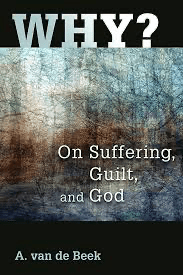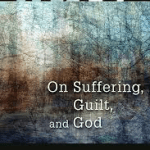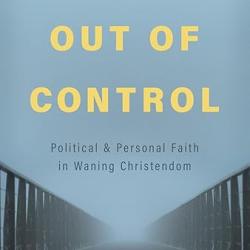“Why?” Part III, Chapter 15: “Gnosis”
In this chapter, Abram van de Beek (vdB) continues discussing views of God, suffering, and evil that begin with God’s goodness and explain suffering and evil as not attributable to God.
Very briefly put, here, in this chapter, the view under consideration is that “evil is inherent in the world and came with it.” (200)
I assume most of my readers are roughly familiar with gnosticism, the belief held in various ways by many second century Christians that matter itself is evil and that all sin and suffering result from the “tomb” of the flesh in which the spirit is trapped.
VdB goes into some detail explaining ancient and later gnosticisms. Gnosticism has never entirely gone away even though the ancient church fathers and later leaders of church and state attempted to suppress it.
According to vdB, gnosticism is “an atmosphere in which one lives” and it still “haunts the church.” (206) The key to all gnosticism—ancient and modern—is “world avoidance.” (213)
VdB ends this chapter with two plus pages of fine print in which he helpfully discusses Karl Barth’s view of evil as “nothingness.” That is one of the most enigmatic elements of Barth’s theology and I think vdB summarizes it very well and truly.
So, why is this chapter there and what is its significance? I believe vdB rightly excludes gnosticism from authentic Christianity and helpfully points out that echoes and relics of ancient gnosticism still exist even within orthodox Christianity. One is the tendency of many Christians to attribute sin, suffering and evil to the world itself, meaning the physical and material world—the earth and our bodies. Salvation, for them, is escape from “the world” into a purely spiritual reality. One problem with this is that it tends to release us from responsibility for sin. Another problem with it is that it tends to denigrate creation itself which, according to the biblical account, is not an emanation of God or evil but God’s good but fallen, broken creation.
I grew up in a form of Christian life rife with a kind of folk gnosticism. Not the full blown gnosticism of the ancient Christian world, but a generally negative attitude toward “the world and the flesh”—as things to escape. A lot of emphasis was placed on Christian asceticism, not of the Catholic mystical variety, but of the Pentecostal legalism variety. “The things of earth” should “grow strangely dim” through elevation of the spirit by means of avoiding earthly pleasures. The body was something of which to be ashamed or afraid. I won’t go on as I’m sure many of my readers know of what I speak here.
Next I will discuss Part III, chapter 16 “God Is Different”—the last chapter of Part III. I will aim to publish that here in about a week. So, those of you reading “Why?” With me, please keep reading but don’t read ahead! If you are behind, try to catch up.
*Note: If you choose to comment, make sure it is relatively brief (no more than 100 words), on topic, addressed to me, civil and respectful, not hostile or argumentative, and devoid of pictures or links. If you are not reading the book or have not read this chapter, please do not discuss it. But you may ask questions.*














